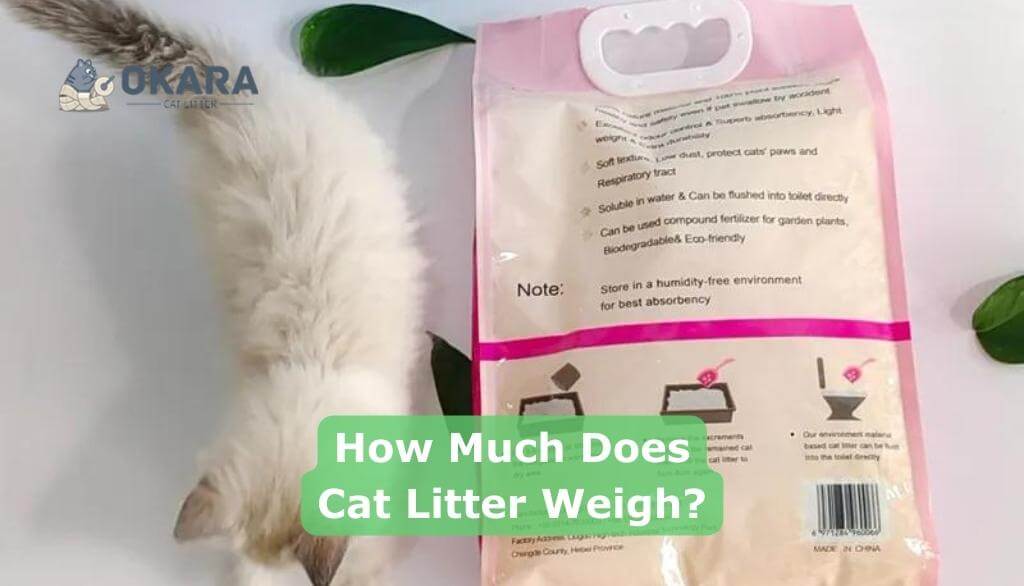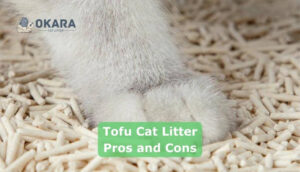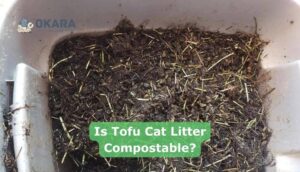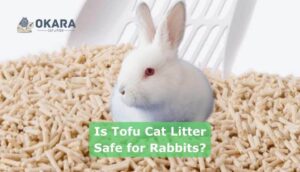How Much Does Cat Litter Weigh?
Cat litter is an essential item for cat owners, and there are several different types of cat litter available in the market. Each type of litter has its own weight, which can affect factors such as cost, ease of use, and environmental impact. In this blog post, we’ll discuss the different types of cat litter and their weights, as well as how to choose the right weight for your needs.

Table of Contents
Types of Cat Litter and Their Weights
The most common types of cat litter are clay, silica gel, recycled paper, and natural materials like wood, corn, tofu, and wheat.
Clay litter is one of the most widely used cat litters, and it is usually the heaviest. It is made from bentonite clay and can absorb a significant amount of liquid. Silica gel litter is another popular option, and it is much lighter than clay litter. It is made from small beads of silica gel that can absorb urine and control odor.
Recycled paper litter is a lightweight option and is made from recycled paper products. It is usually dust-free and has good absorbency. Natural materials like wood, corn, tofu, and wheat litter are also popular options. They are biodegradable and often more eco-friendly than traditional clay litter. They are also generally lighter in weight compared to clay litter.
The weight of the litter can vary depending on the type of litter used. The weight of cat litter can be a significant factor when purchasing litter, as it affects the ease of handling and storage. Here are the average weights of different types of cat litter:
- Clay litter: Clay litter is one of the most common types of litter available and is typically the heaviest type of litter, with an average weight of 20-30 pounds per bag.
- Silica gel litter: Silica gel litter is a popular alternative to clay litter due to its high absorbency and odor control. It is typically lighter than clay litter, with an average weight of 8-15 pounds per bag.
- Recycled paper litter: Recycled paper litter is an eco-friendly option made from recycled materials. It is generally lighter than clay litter, with an average weight of 10-20 pounds per bag.
- Natural materials litter: Litter made from natural materials like wood, corn, tofu, and wheat is becoming increasingly popular. These litters tend to be lighter than clay litter, with an average weight of 10-20 pounds per bag.
Overall, the weight of cat litter can vary depending on the type of litter used, with natural materials generally being lighter than traditional clay litter.
Cat Litter Weights by Brand
The weight of cat litter can vary widely depending on the brand and type of litter. Here are the weights of some popular cat litter brands:
- Arm & Hammer Clump & Seal Litter: This litter comes in a 28-pound box, which is a popular size. It’s also available in smaller sizes such as 14 pounds and 19 pounds.
- Tidy Cats Lightweight Litter: This litter is known for its lightweight formula, which makes it easier to handle and transport. It comes in a 17-pound jug or a 8.5-pound jug.
- Fresh Step Litter: This brand offers a variety of litter options, including clay litter and natural litter. The weight can range from 14 pounds to 37 pounds, depending on the type of litter.
- World’s Best Cat Litter: This brand is known for its natural and eco-friendly formulas. It comes in a 28-pound bag or a 12-pound bag.
- Purina Yesterday’s News: This recycled paper litter is available in a 30-pound bag or a 13.2-pound bag.
It’s important to note that the weight of cat litter can also vary within the same brand depending on the type of litter and packaging. Always check the weight and size of the packaging before purchasing to ensure you are getting the right amount of litter for your needs.
Cat Litter Weights by Packaging
When shopping for cat litter, it’s important to pay attention to not only the weight of the litter itself, but also the weight of the packaging. The weight of cat litter can vary depending on the size and type of packaging it comes in.
For example, a 10-pound bag of clay litter will typically weigh more than a 10-pound box of recycled paper litter due to the density of the materials. Similarly, a 20-pound bag of wood pellet litter may be lighter than a 20-pound bag of clay litter due to the different materials used.
It’s also important to note that some brands may offer variations in packaging size and type, such as a resealable bag versus a traditional plastic jug. This can also affect the overall weight and price of the litter.
How Weight Affects Cost
When it comes to choosing cat litter, weight plays a significant role in determining the cost. Heavier litters such as clay litter are typically more expensive than lighter alternatives such as recycled paper or natural materials like tofu or wheat. The reason for this is because heavier litters require more resources to produce, package, and transport, which all add up to a higher cost.
Additionally, heavier litters may also incur higher shipping costs due to their weight, which can further increase the price for consumers. On the other hand, lighter litters may be more affordable and eco-friendly, as they require fewer resources and have a smaller carbon footprint.
When considering the cost of cat litter, it’s important to keep in mind that the weight of the litter is just one factor to consider. Other factors such as odor control, clumping ability, and overall performance may also affect the price. Therefore, it’s important to find a balance between weight and other factors to choose the best litter for your cat and budget.
Environmental Impact of Cat Litter
Traditional clay litter is made from a non-renewable resource and is not biodegradable, meaning that it can sit in landfills for years, contributing to pollution. On the other hand, natural materials such as wood, corn, tofu, and wheat are biodegradable and can often be composted or disposed of in an environmentally friendly manner.
Recycled paper litter is another eco-friendly option as it is made from recycled materials and is biodegradable. Silica gel litter, while not biodegradable, is often made from a natural material and can be recycled.
When choosing cat litter, it is important to consider the environmental impact of the material. Opting for natural or recycled materials can make a significant difference in reducing waste and pollution. Additionally, consider purchasing litter in bulk to reduce packaging waste and the overall carbon footprint of shipping.
Choosing the Right Weight of Cat Litter
Choosing the right weight of cat litter is important for both the comfort of your cat and your own convenience. Here are some tips to help you choose the right weight:
- Consider the size of your cat: Larger cats require more litter than smaller cats. If you have a large cat, you may want to choose a heavier litter to ensure there is enough coverage in the litter box.
- Determine the number of cats: If you have multiple cats, you may need to use more litter to keep up with their needs. A heavier litter may be more cost-effective in this case.
- Look at the litter type: Some litter types, such as clay, are naturally heavier than others. If you prefer a lighter litter type, you may need to use more of it to achieve the desired coverage in the litter box.
- Consider your own convenience: If you find it difficult to lift heavier bags of litter, you may want to opt for a lighter weight option. However, keep in mind that lighter litter may need to be replaced more frequently, which can be more time-consuming.
- Experiment with different weights: Ultimately, the best way to determine the right weight of litter for your cat is to try out different options and see what works best for you and your cat’s needs. Don’t be afraid to experiment until you find the right fit.
FAQs
How Much Does the Average Cat Litter Weigh?
The average weight of a full 20-pound bag of clumping or clays cat litter is about 20 pounds.
What Are Some Factors That Affect the Weight of Cat Litter?
-The type of cat litter
-The size of the packaging
-The materials used to make the litter
How Many Pounds of Cat Litter Do You Need a Month?
The amount of cat litter needed per month can vary based on several factors, including the size of the litter box, the number of cats, and how often the litter is changed. On average, a single cat may use between 10-20 pounds of litter per month, but this can vary widely depending on the individual cat’s habits and the type of litter used.
How Does the Size of the Packaging Affect the Weight of Cat Litter?
The size of the packaging affects the weight of cat litter because larger packages tend to contain more litter, resulting in a heavier weight. However, the weight of the packaging itself also contributes to the overall weight. So, a larger package may have a higher weight due to both the litter and the packaging material.
How Does the Weight of the Packaging Affect the Cost of the Cat Litter?
The weight of the packaging can affect the cost of cat litter because it impacts the shipping and handling costs for the manufacturer and retailer. Heavier packaging may require more resources to transport and store, which can increase the overall cost of the product. This cost may be passed on to the consumer through a higher price for the litter. However, other factors such as the brand, type of litter, and quality of the materials used may also play a role in determining the cost.
Conclusion
There are several types of cat litter available with varying weights, brands, and environmental impact. Consider your cat’s needs, your preferences, and the environment when choosing the right weight and type of cat litter for your household.
We are a professional tofu cat litter manufacturer in China. Our tofu cat litter is sold to many countries and also received more and more loyal customers. We do OEM/ODM for wholesalers and importers. If you need tofu cat litter, please feel free to Contact Us.



